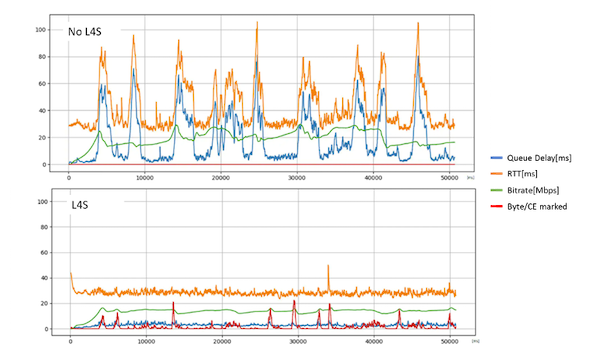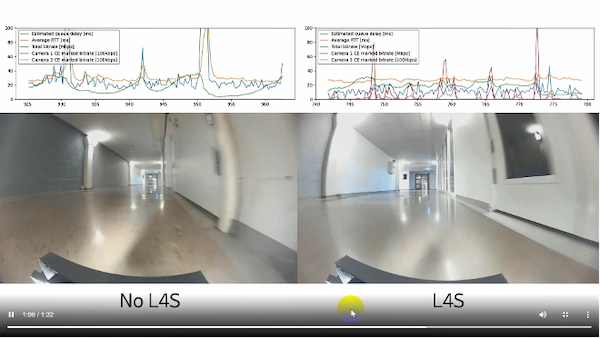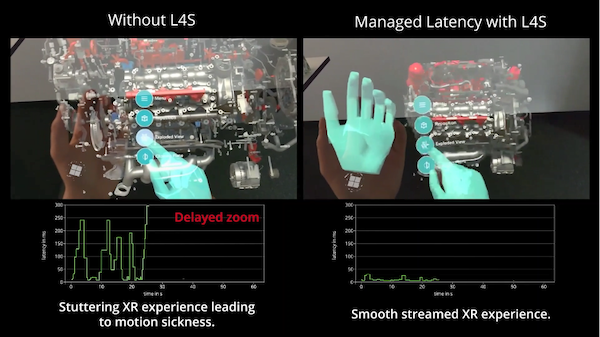
- Home
- Media Center
-
Events
- Wuzhen Summit
- Regional Forums
- Practice Cases of Jointly Building a Community with a Shared Future in Cyberspace
- World Internet Conference Awards for Pioneering Science and Technology
- The Light of Internet Expo
- Straight to Wuzhen Competition
- Global Youth Leadership Program
- WIC Distinguished Contribution Award
- Membership
- Research & Cooperation
- Digital Academy
-
Reports
- Collection of cases on Jointly Building a Community with a Shared Future in Cyberspace
- Collection of Shortlisted Achievements of World Internet Conference Awards for Pioneering Science and Technology
- Reports on Artificial Intelligence
- Reports on Cross—Border E—Commerce
- Reports on Data
- Outcomes of Think Tank Cooperation Program
- Series on Sovereignty in Cyberspace Theory and Practice
- Other Achievements
- About WIC
- 中文 | EN

Collection: 5G time critical communication enabled remote controlling

Enhanced Mobile Broadband (eMBB) services, such as video streaming, that require high-speed data transmission, can be accessed using a 5G time-critical communication-enabled remote control. Furthermore, it provides a smooth user experience in real fluctuating wireless environments by enabling new 5G applications such as XR, remote driving, and remote control.
Cross-layer optimization to overcome wireless environment fluctuations. No delays for videos and smooth video anytime, anywhere
Modern 5G systems are primarily designed for eMBB and maximize data rates without any guarantee of latency. Real 5G networks experience a great deal of fluctuation in radio conditions and base station loading. Emerging applications, such as XR, real-time video conferencing, and teleoperation of vehicles, may require higher data rates than the existing network can support, resulting in queue delays at base stations and streaming stalls. In this case, latency spikes may occur, and video streams may be interrupted. Consequently, Ericsson has developed a time-critical communication (TCC) toolbox, of which L4S is an important component. In the International Organization for Standardization (IETF) and 3GPP, Ericsson and China Mobile are leading the standardization process for Low Latency, Low Loss – Scalable Throughput (L4S) technology. Tencent Cloud has developed, jointly with Ericsson Cloud, the world's first 5G TCC-enabled remote control system, pioneering the introduction of the L4S mechanism into a 5G network. Using cross-layer optimization between wireless networks and applications, when remote driving vehicles operate in a wide-area and variable 5G radio environment, the operator is able to view real-time video in a smooth manner, ensuring the safety of the driver. As a result, remote driving is no longer frozen suddenly in the existing 5G network, risks are reduced, and remote driving is effectively promoted from concept to production. Another direction for the evolution to 6G is cross-layer optimization.

Video Stream Delay Comparison Without and With L4S Support, L4S can Significantly Eliminate Delay Pulses

L4S Improves the Remote Driving Experience. With L4S, There is No Delay Pulse During Remote Driving and the Video Experience is Smooth
Compatible with international mainstream protocols, supported by many international manufacturers
L4S is now supported by all mainstream network protocols, including RTP/RTCP, TCP Prague, DCTCP, and QUIC. A part of L4S's open-source code is implemented on the world-famous open-source website GitHub, using the Multimedia Self Clocked Rate Adaption for Multimedia (SCReAM) algorithm, which is suitable for mainstream RTP/RTCP protocols. The L4S technology has been supported by a number of international manufacturers. At the global level, Deutsche Telekom has demonstrated the benefits of L4S through white papers and cloud games; Nvidia has demonstrated the benefits of XR at its GPU Technology Conference 2022; and Apple has demonstrated the benefits of L4S at its 2022 Global Developers Conference. In China, in the unmanned transportation project of an open-pit mine in Sany Mine in Inner Mongolia, the 5G real-time remote assisted driving function was put into commercial use; other projects have been implemented, including a remote control for the grabber and a remote parking system for a passenger vehicle.

Nvidia Shows L4S Technology Latency Improvements for XR Video Streams
Potential to leverage the trillion-dollar market
The use of 5G time-critical communication is expected to be widespread in a wide range of vertical fields, including augmented reality, remote control, industrial control, and mobile automation. According to Market Research Future (MRFR), a market research firm, industrial control systems will grow at a compound annual rate of 10% by 2030 and reach a market size of $180 billion. Citibank forecasts that there will be 900-100 million XR end users worldwide by 2030, with a market value of between $1 trillion and $2 trillion. These markets will be impacted by 5G time-critical communications and the remote control they enable. As a result of the 5G TCC enabled remote controlling, these applications will be able to maintain a good user experience at any time within the real 5G network, thereby speeding up the marketing process.

The World Internet Conference (WIC) was established as an international organization on July 12, 2022, headquartered in Beijing, China. It was jointly initiated by Global System for Mobile Communication Association (GSMA), National Computer Network Emergency Response Technical Team/Coordination Center of China (CNCERT), China Internet Network Information Center (CNNIC), Alibaba Group, Tencent, and Zhijiang Lab.





